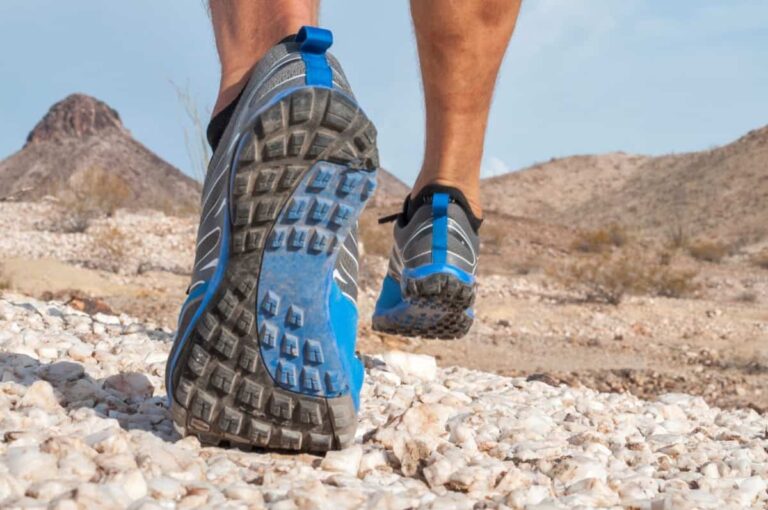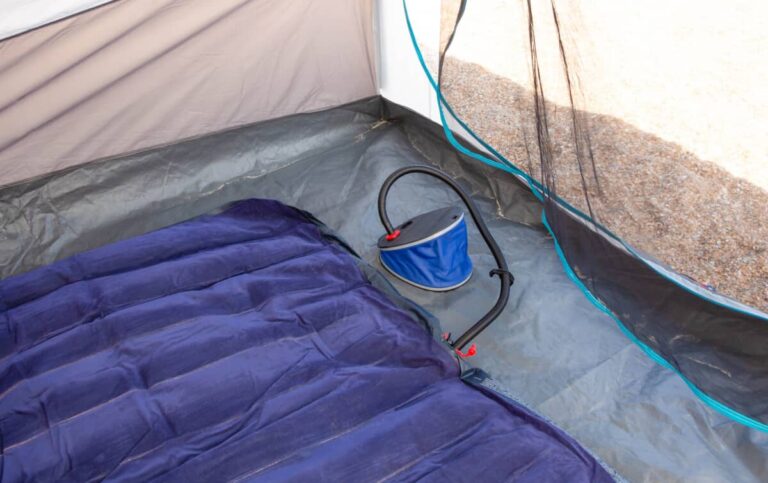Swimming vs. Running: Which Sport Burns More Calories?
If you’re looking to get into shape, both running and swimming will be great forms of exercise, but the question remains, which is better? Which burns more calories?
To burn as many calories as possible, running yields the best results. It burns 1,552 calories if you weigh 169lbs (76.6kgs) and run 7.5 miles (12.07km) for 90 minutes. High intensity swimming for 90 minutes at the same weight, burns 1,149 calories. These calculations depend on many factors
However, depending on your goals, your body type, your ability and a number of other factors, choosing between running and swimming is a total toss-up. Each has its own distinct advantages and you may end up burning more calories by swimming if it suits you better.

Swimming/Running Calorie Calculations
A calorie calculator takes a variety of factors into account, including your weight, how long you’re exercising for, the intensity of your workout. If you’d like to make specific calculations, I recommend using the American Council on Exercise (ACE) Physical Activity Calorie Counter. However, here’s a look at how many calories you can burn according to various running/swimming routines that last for 30 minutes.
| Activity | 140lbs (63.5kgs) | 180lbs (81.6kgs) | 220lbs (99.7kgs) |
| Swimming (casual) | 222 cal | 285 cal | 349 cal |
| Swimming (vigorous) | 317 cal | 408 cal | 498 cal |
| Running (casual/jog) | 222 cal | 285 cal | 349 cal |
| Running (5mph/8kmph) | 254 cal | 326 cal | 399 cal |
| Running (6mph/9.6kph) | 317 cal | 408 cal | 498 cal |
| Running (7mph/11.2kph) | 365 cal | 469 cal | 573 cal |
| Running (8mph/12.8kph) | 428 cal | 551 cal | 673 cal |
| Running (10mph/16kph) | 508 cal | 653 cal | 798 cal |
As you can see, in all weight classes, casual swimming and jogging burn the same amount of calories. But, as you begin to run faster and swim more intensely (either by increasing your speed or using more intense swimming strokes), you burn more and more calories.
The more you weigh, the more calories you’ll burn. So, unless you’re running faster than 6 miles per hour (9.6 km/h), which by the way, is about the average marathon pace, you will be burning about as much as you do with high-intensity swimming.
These calculators are always limited since defining high-intensity vs. low-intensity varies from person to person.
The Pros & Cons Of Running & Swimming
There are lots of other factors to consider if you’re choosing a workout to fit in your plan besides how many calories they burn. Take a look at these factors to decide which exercise fits best for you. For example, I enjoy swimming over running as a form of exercise–so it doesn’t matter how many calories running burns if I don’t want to do it.
Accessibility
Running is a far more popular form of exercise. One huge reason for this is because it’s way more accessible (you don’t even need shoes, technically. Read our article about barefoot running performance here) and comes far more naturally to us (we are evolutionarily more familiar with land than water).
Pools on the other hand aren’t as accessible. Speaking from personal experience, finding a public pool that you can pay a few dollars for entry is not globally available.
Often, lap pools that you can actually swim in for exercise require a gym membership. (like Gold’s Gym)
If you’re lucky, you may live in a place where a public pool is available, and provided there aren’t too many people at the pool, you can visit for a few dollars for each exercise session.
If you’re even more lucky, you live close to a lake or pond where you can swim without paying.
If you’re even more lucky, you have your own lap pool!
Running is far more popular than swimming mostly because of accessibility.
Cost
Swimming is often more expensive than running because of the cost of having access to a lap pool.
Although both swimming and running are comparatively cheap when compared to other hobbies (like ATVs, motorcycles, golfing, etc), there is still a cost difference between running and swimming that are worth noting.
Runners buy a lot of shoes.
If you are just getting started with running, then your first pair of “running shoes” will cost anywhere from $40 to $120. After that, as long as you have comfortable clothes you don’t mind sweating in, you’re good to go! … for 250 miles.
Those who are serious about running have to replace their running shoes on a regular basis. Shoe manufacturers encourage shoe replacement as much as possible, but in reality you can get by with worn shoes a lot longer than the mileage they recommend.
So, your personal cost of running depends on how often you replace your shoes, but if you are a regular runner than you can plan on spending around $150-200+ a year on running gear.
Swimmers have to pay for a pool
Since some of the most accessible ways to get a lap pool are gym memberships, you have to pay for the privilege of using all the weights and other equipment on top of it as well–so you can expect to pay anywhere from $25 to $50 a month just for the pool. (that’s the price of a full gym membership).
That’s $300-$600 a year just for access to a pool, but you will have goggles and miscellaneous other gear that you have to replace on a regular basis but aren’t too pricy (if you don’t get the fancy stuff), which will run you around $50-$100 a year. So, in total, swimming can cost $350-$700+ a year.
Even if your neighborhood has a lap pool (and some fancy ones do), you probably have to pay HOA fees to access it (or it’s bundled into your rent). In that case the monthly cost is likely higher.
Again, if you’re lucky, you have a cheap/free way to get access to a pool that can significantly bring the cost down.
Impact injuries
Swimming has much less impact on your joints than running.
Swimming is much easier on your joints because floating in water reduces the effects of gravity. In fact, many people do rehabilitation exercises in the pool and it’s often the exercise of choice for the elderly.
There’s an entire system of aerobic exercises designed to be done in the water–although the stereotype is that only older people do water aerobics, some of the exercises are quite intense and are excellent at targeting specific muscle groups (perfect for healing the body when you don’t want to complicate the rehab process).
Which Workout Works More Muscle Groups?
If you swim “freestyle” you’ll notice that your shoulders and biceps are getting way more attention than they do normally–in fact when you just get started, your arm muscles will burn big time–but if you can get to the point where your form and strength are good enough, then you’ll feel your entire body working.
In general, swimming is primarily a workout for the upper body with a lot of support from the lower body.
There are other swimming forms such as the breaststroke that uses your different parts of the body in very different way. If you want dynamic exercises that targets more of your body, than swimming is the superior choice.
Long-distance running on the other hand primarily uses your lower body with very little exertion on your arms (outside of providing balance). Furthermore, while running does exercise your obliques, it doesn’t stress the abdominals (although core strength is very important to good running posture).
Health benefits
The nice thing about swimming is that water brings about a sense of serenity that’s highly beneficial for your mental health in many ways.
I’ve experienced this first-hand–there’s something about being in the pool or the lake that is instantly calming. It’s hard work to be sure, but when you give yourself a moment in the water it feels like a weight’s taken off your shoulders–and in a way, physically, it has!
Swimming improves your blood circulation and the oxygen levels in your blood, so it’s just generally better for your overall health.
Running is also good for strengthening your bones and has a positive effect on your mental health. There is even a term called “Runner’s High” used to describe the euphoria of an exhausted body from running.
Running is a fantastic aerobic workout, but it is hard on your knees and lower back. You have to run carefully to avoid injury and you have to ensure you get the right shoe support–which differs from person to person.
Finding Motivation and Consistency
So, now that you have the calorie data as well as some other comparisons between running and swimming, ultimately, the decision is up to your own preferences and what you can make work in your life.
If you love swimming but there are no pools accessible without driving half an hour? Maybe running is the best choice.
If you love running but you have a bad knee that’s been having issues? Perhaps swimming is the only option.
Which do you prefer doing? Which is more fun and likely to keep you coming back for more every day? Do you suffer from any injuries, such as arthritis? Both running and swimming, consistently, day after day, will burn calories and will get you into great shape.
There’s no real reason to have to say you can only do one or the other. Swimming and running both have their strengths and weaknesses.
Pick the activity that keeps you coming back, and if you really can’t decide, do both. A little cross-training really can’t hurt.
Recommended exercises
It’s all good to talk about the benefits of swimming and running, but before you climb that mountain, you need to put some stones in the river to get you there. Get on that treadmill, jump in the pool and use these routines to get the most out of these awesome forms of exercise.
Swimming routine 1
If you’re just beginning, a good goal to shoot for is 10 lengths–that means across the lap pool and back again 5 times.
Feel free to mix up every 3rd lap with a stroke that you can rest with (like the breaststroke). The more you push yourself the more results you’ll get.
Once you get the hang of this, try this:
28 lengths (700 yards/640m) at fast pace
Once 28 lengths starts to become too easy, push it up to 48 lengths.
This could take a couple months of consistent swimming to nail down.
Swimming routine 2
Take 2 lengths to warm up nice and easy to get your body used to what’s coming.
2 length warmup
56 lengths of alternating intensity, from easy to hard, mixing up the 3 stroke categories (freestyle, breaststroke and backstroke)
Running routine 1
Run for 10 minutes or for 1 mile–gradually add time/mileage a week at a time.
Running Routing 2
Try interval training but doing a run-walk combo where you run for two minutes and then walk/jog for the next minute and alternate between the two for 30 minutes. It sounds like it would be easy–but this can be difficult if you run hard during the run portions.
Running routine 2
Once you’re able to run five miles, it’s time to start challenging yourself. Begin and end your run at a light-pace for a warm-up/cooldown. Run at a faster pace in the miles between and try to beat your previous day’s times every day until you’re running 10 miles (16km) at a time at better times as you progress.
You will have to tweak your routines frequently, as your ability and endurance improve.
If you get injured, you should spend less time running and more in the pool until you’ve recovered. However, you should also be wary of the strain that moving your rotators in the pool can put on an injured muscle/joint. Don’t overdo it.
The key to burning those calories is knowing what you’re doing and figuring out the right routine for yourself, to best suit your needs and your goals. After that comes dedication and you simply cannot give up. You have to put in the hard hours and feel your lungs fighting back after every length, after every mile.
Get that right and you won’t even be thinking about the calories anymore; you’ll be thinking of how much better it feels to have invested time in your own body, which is ultimately what this is all about.





